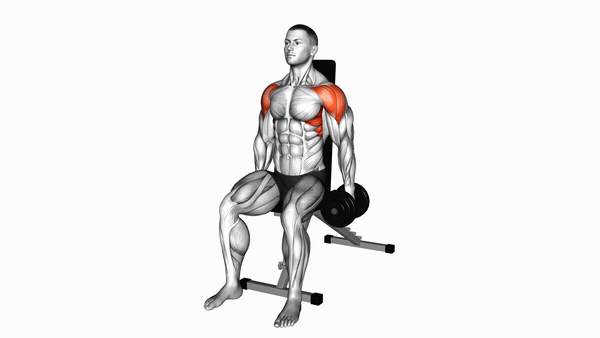To perform Dumbbell Seated Lateral Raises, you will need the following equipment:
- Dumbbells
- A weight bench or sturdy chair
The primary and secondary muscle groups targeted by the Dumbbell Seated Lateral Raise include:
- Primary: Deltoids (Shoulders)
- Secondary: Upper trapezius
When it comes to enhancing your shoulder workout, variations of the Dumbbell Seated Lateral Raise can provide unique benefits while targeting similar muscle groups. Here are a few effective alternatives:
-
Dumbbell One-Arm Lateral Raise: This variation isolates each shoulder independently, improving muscle stability and coordination. It allows for a greater range of motion and can help correct imbalances between the left and right shoulders.
-
Dumbbell Lateral to Front Raise: This exercise combines lateral and front raises, effectively targeting both the lateral and anterior deltoids. It enhances shoulder strength and stability while promoting better posture.
-
Dumbbell Lying Rear Lateral Raise: Focusing on the rear deltoids, this variation helps improve overall shoulder aesthetics and posture. It also aids in injury prevention by strengthening the muscles that stabilize the shoulder joint.
Each of these variations can complement your fitness routine by adding diversity and targeting different aspects of shoulder strength. Try them out and see which one works best for you!
The Dumbbell Seated Lateral Raise is a powerful exercise that adds strength and definition to your shoulders. By ensuring proper form and avoiding common mistakes, you'll be on your way to achieving better upper body strength. Get started today, and consider adding variations and alternatives to keep your workouts fresh!
Load More










